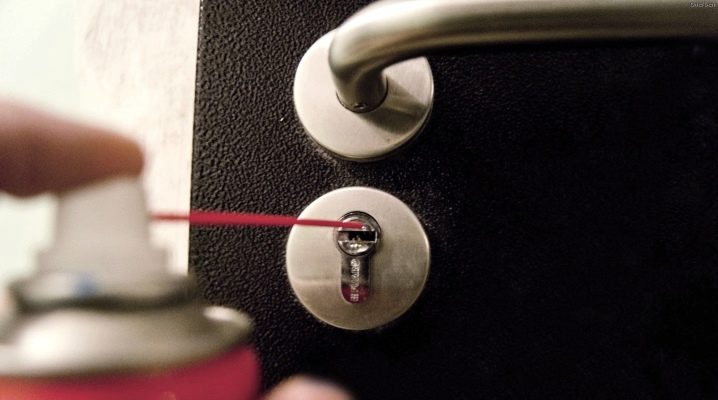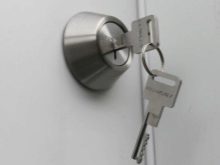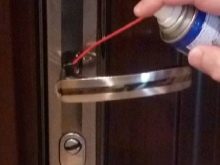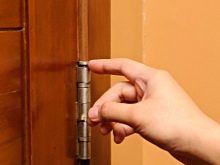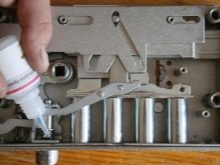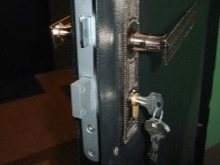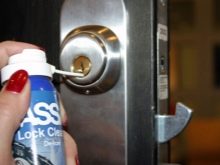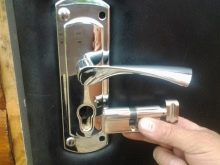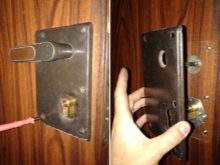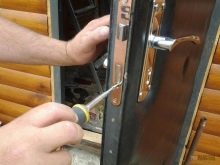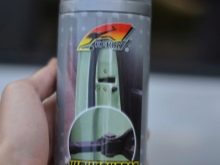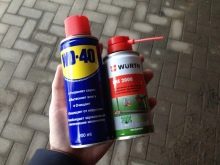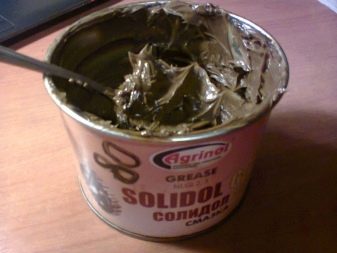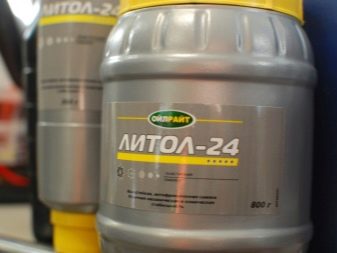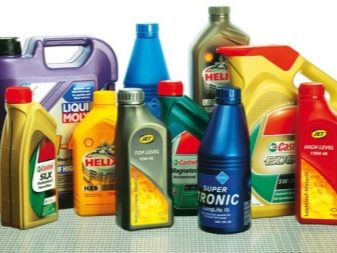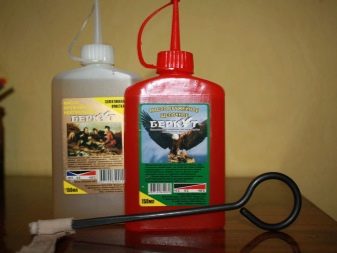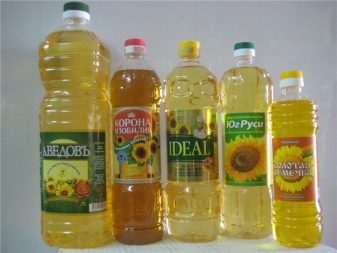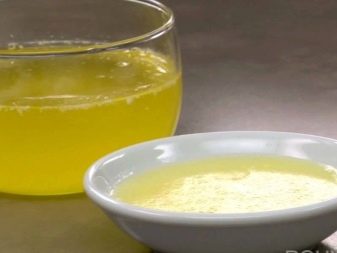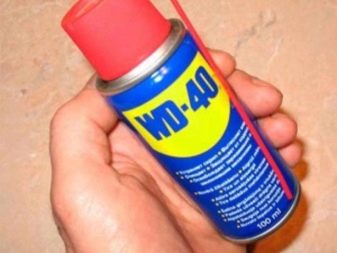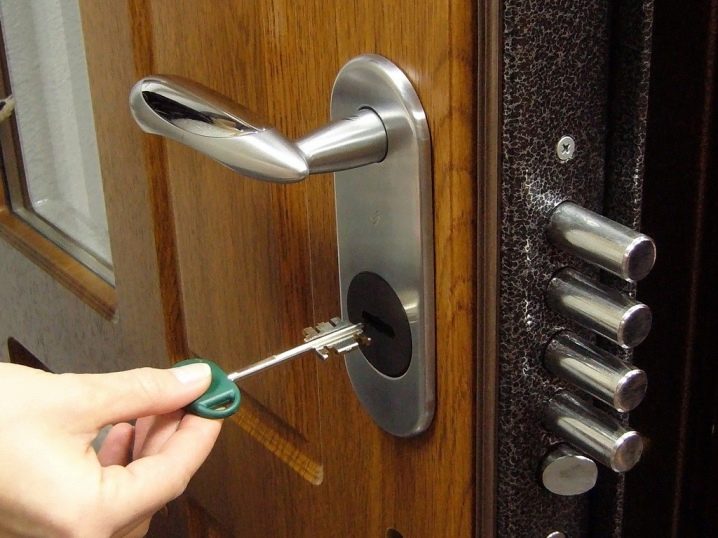What and how to lubricate the door lock?
Trouble happens to all. It happens that you are in a hurry to go home, try to unlock the front door as quickly as possible, but it suddenly does not open. And the point is not at all that the mechanism has broken down or you have mixed up the keys, this happens if you do not grease the door lock for a long time.
When do you need to process?
Any door hardware must be periodically lubricated, and such work should be carried out not as complications arise, but regularly, in order to avoid many troubles with the lock. It is not a secret for anyone that it is this part that plays the most important role in ensuring the safety and security of the home, and when the castle goes down, there is a potential threat both for the house itself and for its inhabitants.
Lubrication is carried out for the following purposes.
- For sliding - the use of a lubricating compound facilitates the free turning of the mechanism and its operation.
- To reduce the degree of wear - if there is too little lubricating fluid in the lock, then the entire work of the system is difficult, and the parts begin to grind, chips shake off the metal, and dust particles start to fall inside, which act like rough abrasives.
- To combat the accumulation of dust - when there is a lack of lubrication, particles begin to stick together in hard lumps and completely block the free movement of unfolding beams.
- To prevent rust. Metal corrosion is the main enemy of each mechanism, made of metal, it leads to complete or partial destruction of the material, in this case, all the elements of the lock jam, or even stop moving.
Periodicity
As a rule, lubrication is carried out "in fact", that is, when there are already some problems and inconveniences in using the lock. This may provide temporary relief, but it will not solve the problem and, after a while, it will again be felt.
In order for your castle to serve as long as possible, it is necessary at least once a year to carry out preventive coating with lubricating compounds.Entrance doors must be processed more often, especially in high-rise multi-storey buildings: here it is necessary to process fittings every 6 months, but the owners of cottages and private houses should conduct inspection and processing quarterly.
In a detached house, the castle comes into direct contact with adverse weather conditions - temperature extremes, precipitation, exposure to ultraviolet radiation, and particles of dust and dirt that are carried by the wind. All this causes pollution mechanisms, the appearance of rust and microcracks. As a result, the lock quickly begins to jam, and a problem soon arises.
The choice of composition
Modern industry offers a wide range of different lubricating compositions. Consider the most effective ones.
- Silicone Grease - this compound is recommended for use with cylinder cylinder locks. Thanks to silicone, a gentle, but at the same time, precise turning of all elements of the mechanism is ensured. In addition, silicone tends to repel moisture, so its use significantly reduces the likelihood of corrosion.
- Graphite grease - composition, which is quite well established itself for the locks of the old type. By the way, instead of such a lubricant, you can take a simple pencil lead, it helps to cope with the jams of locking mechanisms suvaldnogo type.
- WD-40 - universal composition that will protect against many problems with the work and the use of the castle. The tool facilitates turning mechanisms, repels moisture, and besides, eats away corrosion.
- Grease - better known as calcium grease. Effective tool to facilitate the use of the castle.
- Litol - lithium grease, which is extremely resistant to water. In industry it is used for bearings, however, in the case of a lock, there will be no use for such a lubricant.
- Machine oil - often used in everyday life, has proven performance.
- Gun oil - It is recommended for lubrication of external keyholes, because it works effectively even at extreme temperatures.
As an emergency measure, you can resort to improvised means.
- Vegetable oil. Of course, it is difficult to fully name this compound,but as an emergency measure it can be used. But for the prevention of breakdowns of the mechanism it is better to stay on other drugs.
- Fat. Melted fat can become another lifesaver, which will give a temporary solution to the problem, but you should not use it on an ongoing basis, otherwise the fat will accumulate, and the work of the lock, on the contrary, will become worse.
Obviously, there are many effective drugs, so making the right choice is not at all easy. You should not abuse improvised means, and all other options are considered acceptable in a given situation.
It is very important to select lubricants based on the design features of the locking device itself.
- Lever mechanisms should only be treated with dry formulations. If you use oil, it will quickly absorb dirt and dust, which will lead to even greater damage to the device. In this case, it is necessary to opt for a graphite powder.
- Bronze Cylinder Mechanisms less demanding on lubricating compositions, however, the choice of the drug should be approached more responsible than the cheaper metal used to make the lock.For cylinder constipation, it is best to buy silicone lubricant in the form of a spray, WD-40 has proven itself well, although it evaporates pretty quickly, which is why this lubricant needs to be updated periodically.
- Combination locks are also subject to mandatory lubrication, they even have special holes for entering the compositions. Optimal use of deep penetration aerosols, for example, WD-40 and UPS-1.
Lubrication work
Clean the keyhole before lubricating the door lock. To do this, you just need to pour in a special cleansing drug inside and wait for the allotted time, as a result of the action of such a means all the dust and pollution start to go out. The composition should be introduced abundantly, so that the whole litter has the opportunity to come to the surface.
To finally get rid of blockages, you need to put a key into the door crack several times, wipe off all the accumulated dirt and repeat the procedure until the well is completely cleaned. Immediately after this, it is necessary to very carefully pour or inject grease into the lock, get all the excess wet, otherwise they will simply spread over the surface of the door.After that, insert the key and turn it repeatedly in all directions, then remove and wipe dry. Keep in mind that in the next few days there may be traces of lubricant on the key, so make sure that it does not smudge your clothes.
If you are dealing with lever locks, they should first be removed from the door, reveal the secret, and only after that lubricate, in this case it is better to use slate powder. Next, you should check the ease of turning the key. If everything is in order, then it is necessary to return the lock mechanism in place and secure.
However, this only works if you are conducting scheduled work. But if you had a force majeure, and the key is jammed, then you should first try to pull it out. To do this, gently swing the key from side to side, without making a sharp effort. If the key still remains in the lock, then it is necessary to disassemble the mechanism and remove the larva itself from it. If you feel that you are not able to cope with the problem yourself, seek the help of specialists.
Now that we have identified the need for periodic lubrication of door locks in the apartment, we should focus on lubricating the hinges.Regular processing of them allows not only to significantly extend the life of fittings, but also often eliminates the unpleasant creak of the door, which often makes itself felt in doors of various types.
About how to lubricate the door lock, see the video below.
